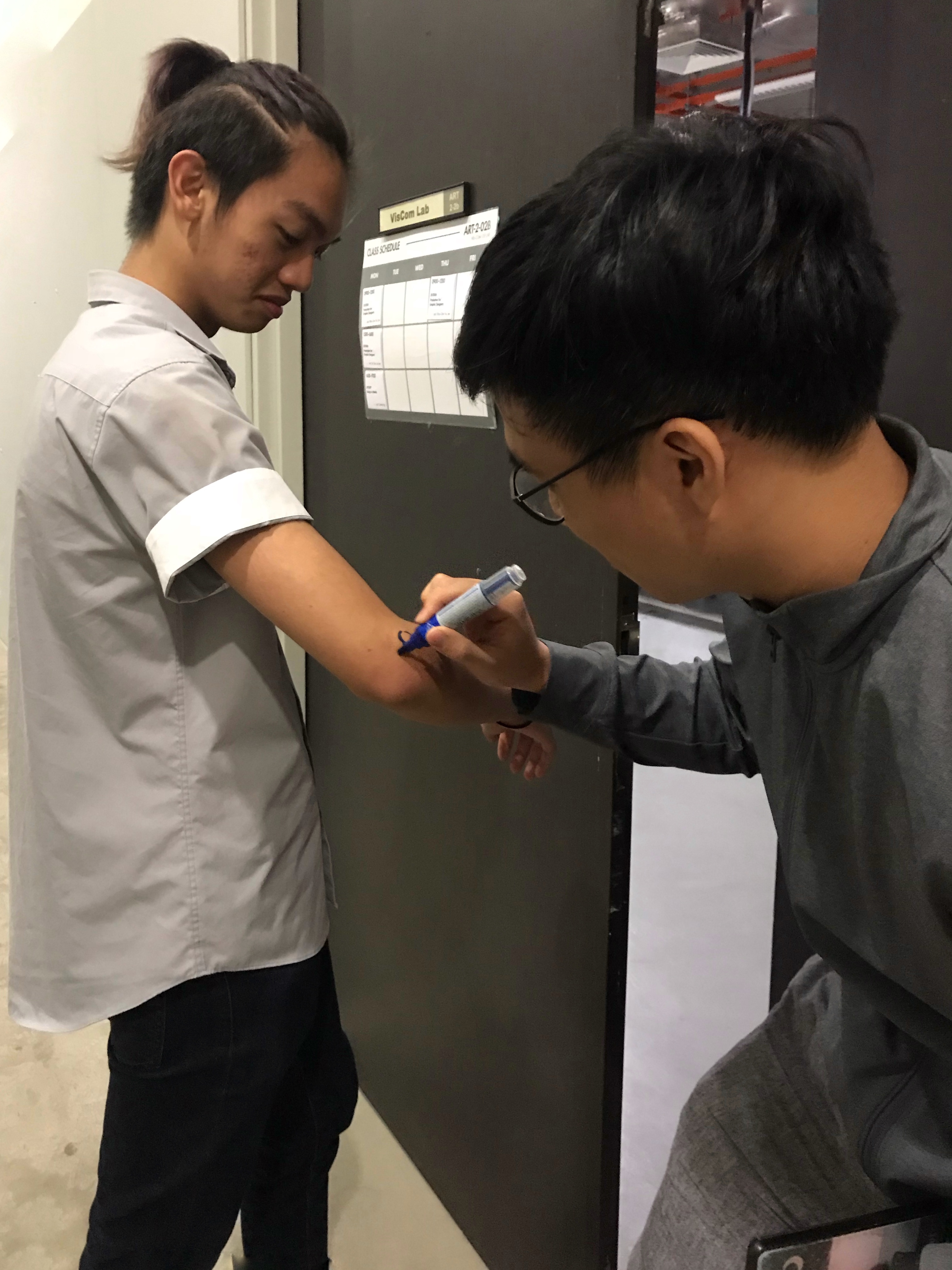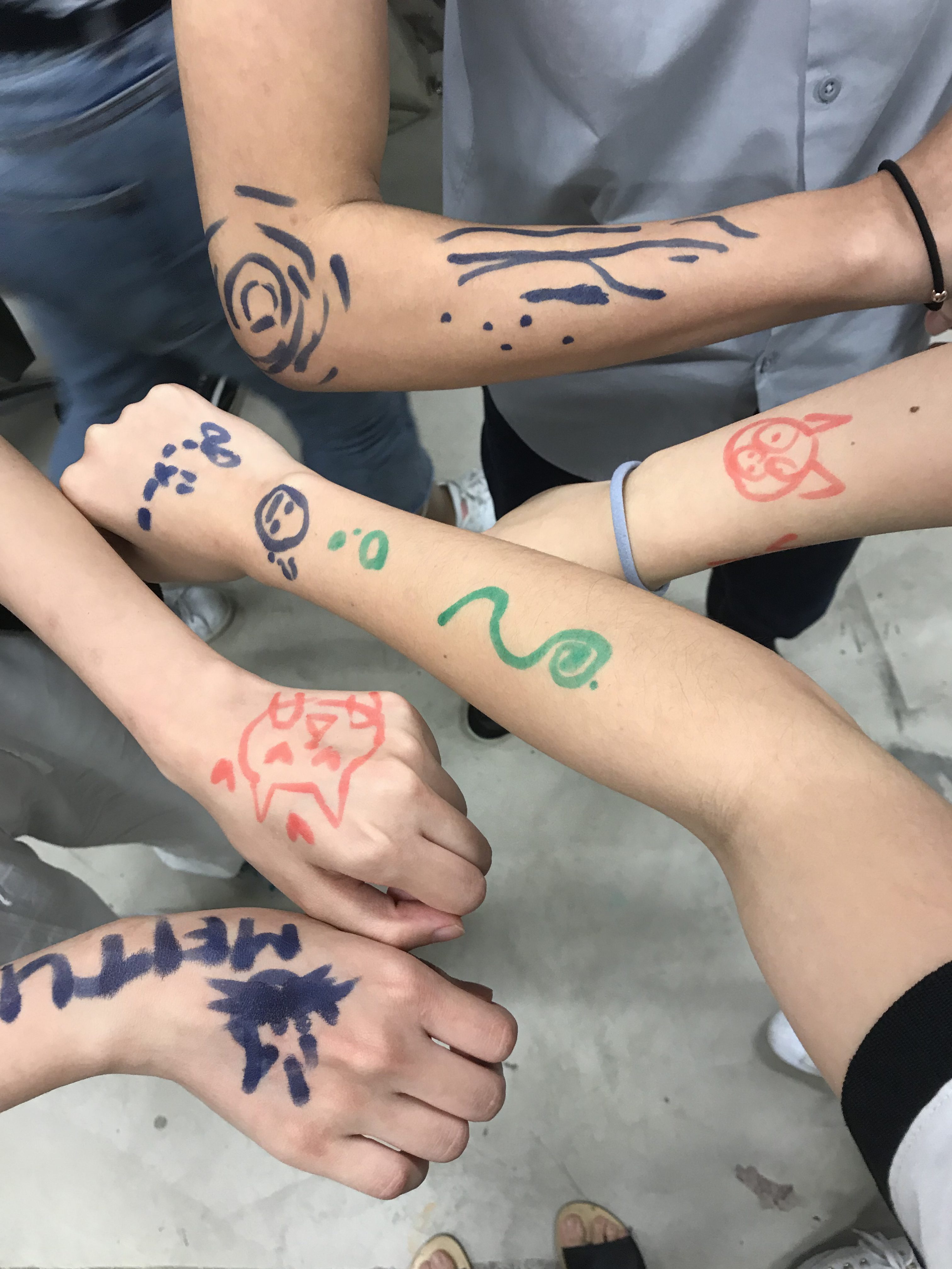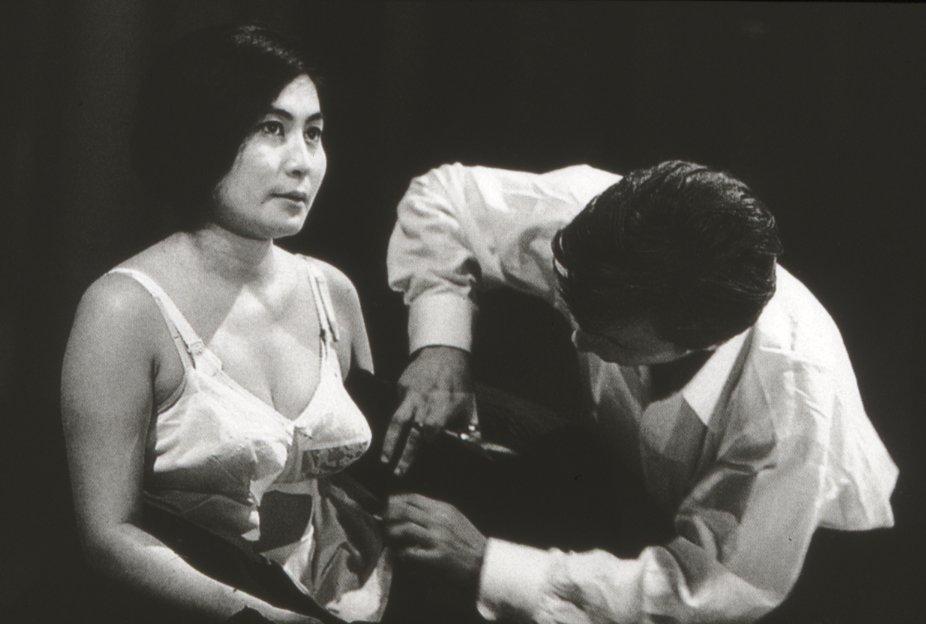For our crowdsourced project, my group mates and I decided to use the help of our fellow ADM students to design a hand-drawn tattoo sleeve. The students were asked to draw on our arms in response to a specified picture that we have chosen earlier. The final artwork was an interesting mix of colours and style as shown below. These drawings were a direct representation of our audience’s reaction and imagination. Thus, there are an endless possibilities to its outcome.
Our project was slightly inspired by Aaron Koblin’s crowdsourced project “The Sheep Market” as both our projects required our audience to contribute a drawing as a part of an artwork. However, the other aspects of the project were entirely different. One of which being the methods employed for crowdsourcing. Aaron Koblin had utilised an online platform while we had chosen physical networking. Unlike our project, “The Sheep Market” also has a better focus and an intended outcome as Aaron Koblin specified only sheep to be drawn.
I think what our group could have done better in this project was to be more specific in terms of what we wanted our the audience to experience and incorporate more instructions. This would allow us to have a better control over the outcome of the artwork.
This crowdsourced project was a fine example of “Do It With Others” (DIWO) as it involved a collaboration between different groups of people through physical networking. This project blurred the line between the role of an artist (us) and a curator/audience (the students), as both parties contributed ideas to the artwork. In Marc Garett’s article, he mentioned that DIWO, “brings all actors to the fore, artists become co-curators alongside the curators, and the curators themselves can also be co-creators.”
The blurring of roles between artists and audiences can be observed in Yoko Ono’s Cut Piece. In her performance, Yoko Ono sat motionless on the stage while the audiences were instructed to snip off a piece of her clothing with a pair of scissors. In this case, the audiences became the agents contributing to the creation of the art, helping the curator achieve their ideal outcome.
DIWO is an upgrade from traditional artwork as it challenges the conventional definition of art made by a single artist to create an integrative experience. It utilises not one, but many ideas to overcome mainstream cultural ideals. There are also more creative space in a DIWO project as compared to traditional artistic creations, because it is not restricted by the authorities. This breathes life into the art.





Love the concept of this collaborative art piece! The uncertainty of what the final art piece will be is interesting and encompasses the essence of D.I.W.O 🙂 Very relevant example (The Sheep Market) given, which made me understand the concept even better.